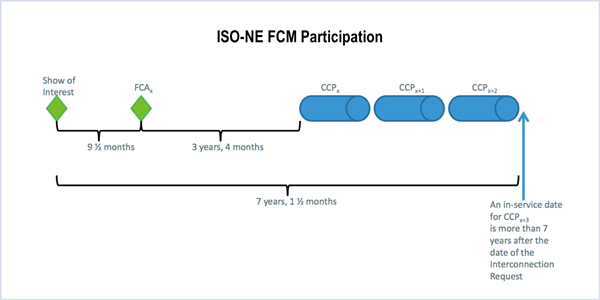ISO-NE on Tuesday proposed a plan to refine the procedural and technical requirements for determining whether new or modified distribution-connected generation should be interconnected by the RTO or a local utility.
Cheryl Ruell, manager of transmission services for ISO-NE, delivered a presentation on guidance for distribution-connected generation to the NEPOOL Reliability/Transmission Committee, which met July 18-19 in Meredith, N.H.
The grid operator’s proposal would consider the location and status of the distribution circuit to which the resource connects — as well as the size of the proposed generator — to determine the nature of any application approval required under Section I.3.9 of the Tariff. The interconnecting transmission owner would submit an application on behalf of generators that don’t participate in the wholesale market. Distribution-connected generators less than 5 MW may file a special category notification form, while those under 1 MW are exempt under the Tariff.
Existing state interconnection processes would continue to apply to any Public Utility Regulatory Policies Act qualified facilities in cases when the generator is interconnecting to a FERC-jurisdictional facility, but only if those projects produce energy to be consumed only on the retail customer’s site or sell 100% of their output to the interconnecting utility, rather than selling to RTO markets. If the host utility wishes to register the qualifying facility in the wholesale market, the host utility must meet all ISO-NE registration, modeling and operating requirements.
Forward Capacity Market and Interconnection Standards
ISO-NE also presented the committee with the current procedures for integrating a new generator with the Forward Capacity Market and interconnecting an elective transmission upgrade (ETU), which is a merchant-funded transmission interconnection.
Director of Resource Adequacy Carissa Sedlacek and Director of Transmission Strategy and Services Al McBride covered timelines for interconnection, resource deliverability and application of the overlapping impact test.
The grid operator analyzes generators and ETU projects in the order they entered the queue and allocates transmission upgrades accordingly. Overlapping interconnection impacts restrict qualification when the upgrades identified for a new generator cannot be completed by the start of the requested capacity commitment period.
Under FERC rules, it may not be just and reasonable “for a generator in one location to sell its capacity as a capacity resource to, and receive capacity payments from, a load in another location if the generator’s output is not deliverable to the load that buys the capacity.”
Queue reforms in 2008 improved the FCM and generator interconnection process by replacing the “first-come, first-served” approach with a combination of a “first-come, first-served” and “first-cleared, first-served” approach. The changes established two types of interconnection service: capacity network resource interconnection service (CNRIS) and network resource interconnection service (NRIS).
Generators are not required to participate in the FCM in order to interconnect to the New England transmission system.
The grid operator uses overlapping impact analysis to identify qualifying transmission upgrades. The study resource — whether transmission or generation — is responsible for impacts where the addition of the capacity results in an overload on a transmission element that is greater than or equal to 2% of the applicable thermal rating or greater than 10 MVA of the applicable thermal rating.
Generation redispatch depends on the distribution factor (DFAX) of the generators on a transmission element in the subsystem, which is a measure of the change in electrical loading on an element such as transmission line or transformer because of a change in output from a given generator. Generation with a DFAX greater than or equal to 3% on a monitored element for a given contingency — “harmer” generation — is not to be redispatched to relieve the constraint for a given study dispatch.
— Michael Kuser




